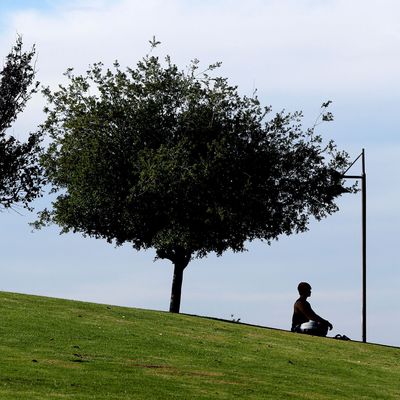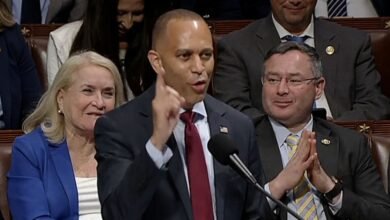

Does being “spiritual” without religion mean self-isolation?
Photo: MediaNews Group/The Riverside Pr/MediaNews Group via Getty Images
One of the big recent meta-trends in American life has been the rapid growth of the so-called religious “nones” — the people who are not affiliated with any religious tradition. It’s a trend most notable among young people, so it bids fair to unravel the American exceptionalist claim that unlike other wealthy countries, the U.S. remains quite religious.
We’re just now beginning to come to grips with the varieties of irreligious experience and what it might mean for the nation’s future. The Pew Research Center has done a lot of work in this area, and last week it offered a close-up look at what is probably the least well-understood segment of these Americans: those who say they are “spiritual” without being religious. We’re talking about a significant group of people, by the way. Pew estimates they represent 22 percent of the U.S. population, as compared to the 58 percent who consider themselves religious, and the 21 percent who are neither religious nor spiritual (including most old-fashioned atheists and agnostics).
By “spiritual,” these SBNRs (as Pew calls them) believe in the existence of non-material entities like souls (89 percent), in a realm beyond nature (88 percent), and in a “higher power or spiritual force” in the universe (73 percent). Just 20 percent believe in God as described in the Bible, while only 21 percent pray daily (though 78 percent do regularly “look inward” or “center themselves.”) Most SBNRs don’t think of “souls” as inherently a human phenomenon, either: 78 percent believe non-human animals have souls, and 71 percent think mountains, rivers, or trees may have souls or “spiritual energies.” As a group, they are kind of on the fence about heaven and hell (about half believe in the former and 40 percent in the latter), but they are more likely than religious or non-spiritual people to believe in reincarnation, and in the ability of the deceased to communicate with, assist, or even (yikes!) harm the living.
The spiritual but not religious also appear to be somewhat self-isolated. Unsurprisingly, only 11 percent of these Americans belong to a religious community. But only 13 percent belong to a “spiritual community,” and 15 percent belong to a “non-religious volunteer community.” And while SBNRs lean Democratic politically, an earlier study from political scientist Ryan Burge suggested they may be as checked out of politics as they are out of religion. (If you want a politically engaged and active constituency of non-religious folk, Burge argues, look for agnostics and especially atheists.)
This points to a potential problem the growth of non-religious spirituality might pose to American society, generally. These Americans don’t buy into secular rationalism, but they also don’t have the intellectual and moral discipline that a set of defined (and often time-tested) religious beliefs might encourage. And they aren’t necessarily being driven by their world-view to act as part of a community, either. Sure, they don’t back the fundamentalist religious movements that menace our society with fiercely-held intolerance, demands for theocracy, and hostility to egalitarian principles. But the spiritual-not-religious may also be difficult to engage, much less mobilize, to defend their religious and irreligious fellow-citizens from today’s authoritarian threats.
The Pew study doesn’t cast much light on the future trajectory the SBNRs. Are they simply in a transitional stage from religion to irreligion without a spiritual dimension? Are they potentially a force for reforming religious institutions to make them more relevant to the needs of current and future societies? Or are they here for good, not quite committed to a view of how the universe is organized, but not ready to abandon the spiritual life to sense-experience and self-interest? We can only hope that stay sufficiently rooted in both otherworldly values and worldly needs to answer the call to civic engagement if and when it’s most needed.
Source link




